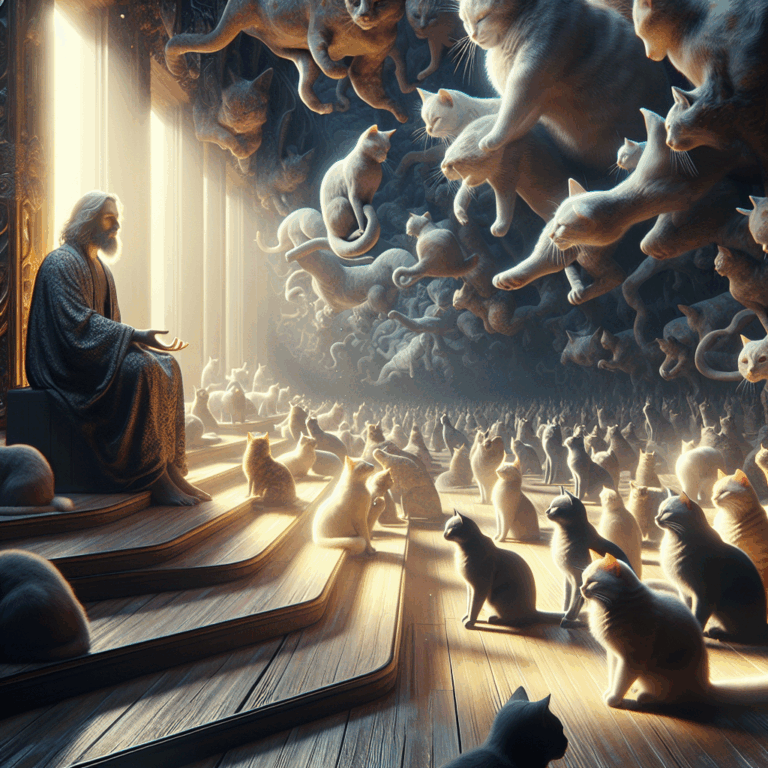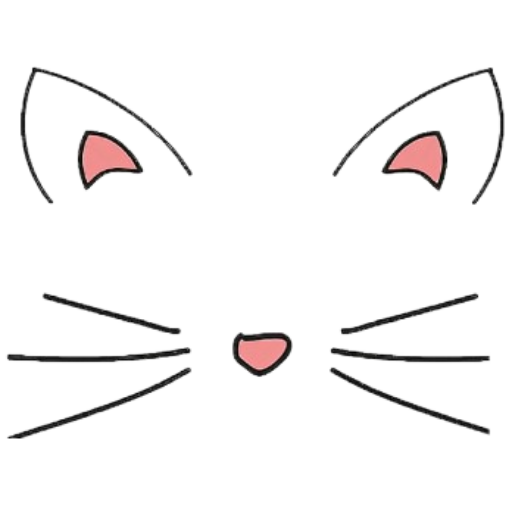The Feline Philosophers: Cats and Their Influence on Human Thought
- 3 Comments
In the vast tapestry of human history, cats have long been revered as enigmatic creatures, their presence often intertwined with the very fabric of cultural and intellectual evolution. Beyond their role as companions, guardians, and muses, cats have also held a significant, albeit subtle, position in the realm of philosophy. From ancient civilizations to modern times, these mysterious animals have inspired thinkers, influenced schools of thought, and served as symbols in philosophical discourse.
The ancient Egyptians, known for their deep reverence for cats, believed these creatures were more than just pets; they were embodiments of certain divine principles. Cats were associated with the goddess Bastet, symbolizing home, fertility, and protection. This early association of cats with divine and moral concepts set a precedent for their symbolic use in philosophical narratives.
In ancient Greece, cats were not as domesticated, yet they still captured the imagination of philosophers. Their independent nature and self-sufficiency were often reflected in discussions about the ideal way of life. The Stoics, for example, might have found in the cat a living embodiment of ataraxia, the serene state of equanimity and freedom from disturbance they so ardently pursued. Cats, with their aloof demeanor, appeared to live in accordance with nature, a central tenet of Stoic philosophy.
Fast forward to the Renaissance, and we see a resurgence of interest in cats among intellectuals. During this period, cats often appeared in artworks and literature as symbols of mystery and knowledge. Leonardo da Vinci, a polymath whose interests spanned art and science, is said to have admired cats for their grace and intelligence. It’s not a stretch to imagine that the feline’s ability to observe quietly and move with purpose might have resonated with da Vinci’s own philosophical inquiries into the nature of observation and understanding.
In the Enlightenment era, cats again found their place in the philosophical discourse, often serving as a metaphor for contemplation and critical thinking. Voltaire, with his penchant for satire and critique of established norms, might have seen the cat as a fitting emblem for the skeptic’s stance—independent, questioning, and unafraid to defy convention.
Modern philosophy has not overlooked the cat either. In existential thought, the cat’s ability to live in the moment and its apparent disregard for human-imposed structures can serve as a model for authenticity and freedom. Jean-Paul Sartre, a key figure in existentialism, might have appreciated the cat’s existential presence—living authentically and unencumbered by external expectations.
Beyond explicit references in philosophical texts, cats have also influenced philosophical thinking through their presence in the lives of philosophers themselves. Notable thinkers such as Michel de Montaigne, who often wrote about the human condition, kept cats and reflected on their behaviors as a means of exploring human nature and society.
In contemporary times, the rise of the internet has made the cat a ubiquitous figure in popular culture and, by extension, philosophical discourse. Memes and viral videos featuring cats often explore themes of absurdity, the mundane, and the profound, echoing the existential questions that have long occupied human thought.
As we continue to explore the depths of human philosophy, cats remain our silent companions, challenging us to think differently, question the status quo, and embrace the mystery of existence. Whether through their symbolic representation or their influence on the lives of philosophers, cats have undoubtedly left their mark on the philosophical landscape, reminding us that wisdom can come from the most unexpected sources.

In the vast tapestry of human history, cats have long been revered as enigmatic creatures, their presence often intertwined with the very fabric of cultural and intellectual evolution. Beyond their role as companions, guardians, and muses, cats have also held a significant, albeit subtle, position in the realm of philosophy. From ancient civilizations to modern times, these mysterious animals have inspired thinkers, influenced schools of thought, and served as symbols in philosophical discourse.
The ancient Egyptians, known for their deep reverence for cats, believed these creatures were more than just pets; they were embodiments of certain divine principles. Cats were associated with the goddess Bastet, symbolizing home, fertility, and protection. This early association of cats with divine and moral concepts set a precedent for their symbolic use in philosophical narratives.
In ancient Greece, cats were not as domesticated, yet they still captured the imagination of philosophers. Their independent nature and self-sufficiency were often reflected in discussions about the ideal way of life. The Stoics, for example, might have found in the cat a living embodiment of ataraxia, the serene state of equanimity and freedom from disturbance they so ardently pursued. Cats, with their aloof demeanor, appeared to live in accordance with nature, a central tenet of Stoic philosophy.
Fast forward to the Renaissance, and we see a resurgence of interest in cats among intellectuals. During this period, cats often appeared in artworks and literature as symbols of mystery and knowledge. Leonardo da Vinci, a polymath whose interests spanned art and science, is said to have admired cats for their grace and intelligence. It’s not a stretch to imagine that the feline’s ability to observe quietly and move with purpose might have resonated with da Vinci’s own philosophical inquiries into the nature of observation and understanding.
In the Enlightenment era, cats again found their place in the philosophical discourse, often serving as a metaphor for contemplation and critical thinking. Voltaire, with his penchant for satire and critique of established norms, might have seen the cat as a fitting emblem for the skeptic’s stance—independent, questioning, and unafraid to defy convention.
Modern philosophy has not overlooked the cat either. In existential thought, the cat’s ability to live in the moment and its apparent disregard for human-imposed structures can serve as a model for authenticity and freedom. Jean-Paul Sartre, a key figure in existentialism, might have appreciated the cat’s existential presence—living authentically and unencumbered by external expectations.
Beyond explicit references in philosophical texts, cats have also influenced philosophical thinking through their presence in the lives of philosophers themselves. Notable thinkers such as Michel de Montaigne, who often wrote about the human condition, kept cats and reflected on their behaviors as a means of exploring human nature and society.
In contemporary times, the rise of the internet has made the cat a ubiquitous figure in popular culture and, by extension, philosophical discourse. Memes and viral videos featuring cats often explore themes of absurdity, the mundane, and the profound, echoing the existential questions that have long occupied human thought.
As we continue to explore the depths of human philosophy, cats remain our silent companions, challenging us to think differently, question the status quo, and embrace the mystery of existence. Whether through their symbolic representation or their influence on the lives of philosophers, cats have undoubtedly left their mark on the philosophical landscape, reminding us that wisdom can come from the most unexpected sources.



3 thoughts on “The Feline Philosophers: Cats and Their Influence on Human Thought”
This insightful post beautifully highlights the intriguing connection between cats and philosophical thought throughout history.
It’s wonderful to hear that you found the post insightful and intriguing in exploring the connection between cats and philosophy throughout history.
What a fascinating exploration of the unique relationship between cats and philosophical thought throughout history!